In this guide, we’ll explore an array of flowers that can beautifully complement hostas, examining their unique characteristics and the benefits of planting them together.
Coral Bells
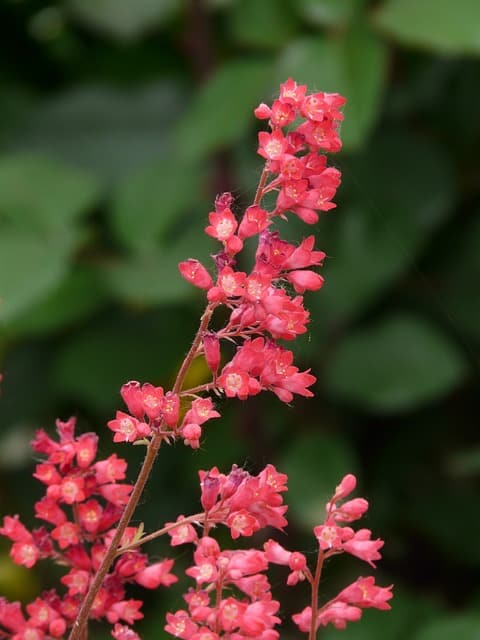
Coral Bells (Heuchera) are stunning perennial plants known for their beautiful, bell-shaped flowers and striking foliage. The contrast between their vibrant colors and the more subdued greens of hostas creates a dynamic visual effect. Coral Bells thrive in similar soil conditions as hostas, preferring well-drained, moist soil with partial to full shade. This pairing allows for a continuous bloom from late spring through summer, as the spikes of tiny flowers rise above their leaves, offering color that complements the hostas’ presence. Furthermore, the foliage of Coral Bells comes in various shades, from deep burgundy to bright lime green, providing additional visual interest throughout the seasons.
By planting Coral Bells alongside hostas, you create an engaging layer of height and texture. Their drought-tolerant nature means that they won’t compete overly much for moisture, allowing both to thrive together harmoniously.
Tuberous Begonias
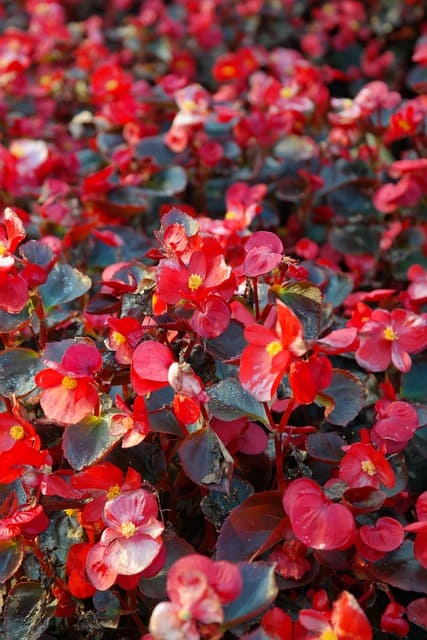
For a splash of color that contrasts beautifully with the broad, green leaves of hostas, consider Tuberous Begonias. These annuals are known for their colorful blooms that range from pure white to vibrant reds and pinks. Since hostas tend to thrive in shade or partial sun, Tuberous Begonias will flourish in similar conditions, allowing them to coexist peacefully.
Tuberous Begonias also prefer rich, well-drained soil, mirroring the requirements of hostas. With their cascading petals and lush foliage, they add an element of elegance and sophistication that adds visual drama to any garden space. As you arrange your plants, incorporating Tuberous Begonias towards the front can create a lovely frame for the hostas, enhancing their lush green backdrop.
Vinca Vine
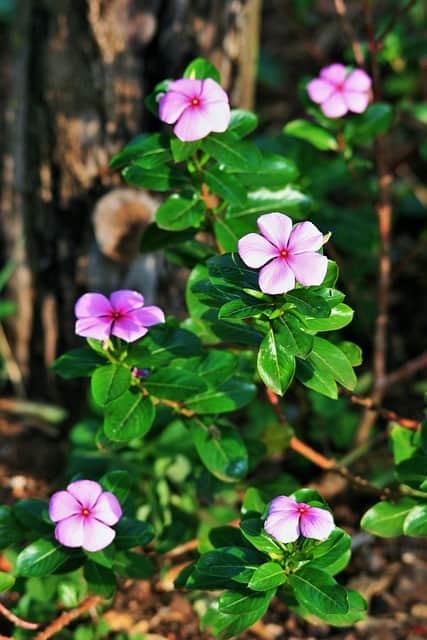
Vinca Vine (Vinca minor) is an evergreen ground cover that complements the large, broad leaves of hostas beautifully. This hardy perennial blooms all summer long, showcasing charming periwinkle blue or white flowers that are an excellent contrast to the greenery of hostas. Vinca thrives in partial shade, making it an ideal companion plant in lighting conditions that are favorable to hostas.
The low-growing nature of Vinca allows it to spread effortlessly around hostas, filling in gaps and suppressing weeds. This creates a tidy, manicured look while allowing both plants to flourish. Moreover, Vinca Vine is known for its resilience against drought, making it a low-maintenance option for those looking to create a lush garden with minimal upkeep.
Hydrangeas
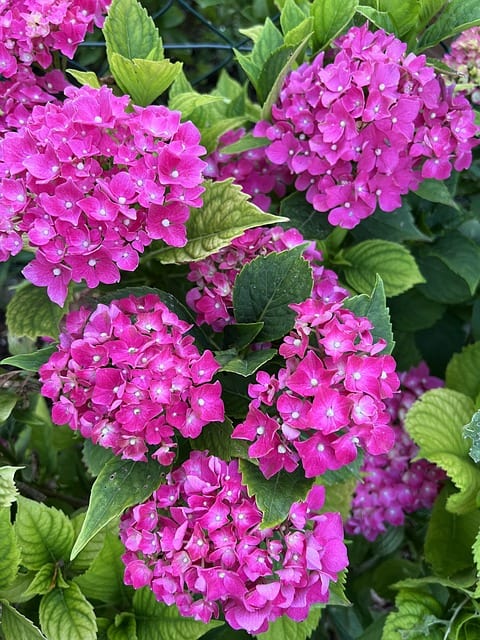
Hydrangeas are showstoppers that can elevate the entire landscape when planted alongside hostas. Their large, rounded flower clusters provide a stunning contrast to the hosta’s foliage, bringing a sense of grandeur to the garden. Available in a spectrum of colors ranging from soft pastels to intense blues and purples, hydrangeas bloom throughout the summer and into early fall, adding vibrant hues that work well with the subtle greens of hostas.
Both hydrangeas and hostas thrive in similar soil conditions, requiring moisture and rich, well-drained earth. Additionally, hydrangeas prefer partial shade, aligning perfectly with the ideal growing conditions for hostas. This pairing not only enhances aesthetics but also creates a lush environment that invites pollinators like butterflies and bees, enriching the garden’s biodiversity.
Sweet Woodruff

If you’re looking for a delicate and fragrant ground cover to plant with hostas, Sweet Woodruff (Galium odoratum) is a fantastic choice. With its whorled leaves and small, white star-like flowers that bloom in spring, Sweet Woodruff creates a charming under-layer for hostas. It thrives in shady areas and can easily fill in spaces around hostas, creating a cohesive look with a lovely contrast in texture.
An added benefit of Sweet Woodruff is its enchanting scent, which is particularly evident when leaves are crushed. This fragrance can enhance the sensory experience of your garden, making it a peaceful retreat. The plant also prefers moist, rich soil, aligning perfectly with the needs of hostas, and will thrive in the same conditions without causing competition.
Tulips
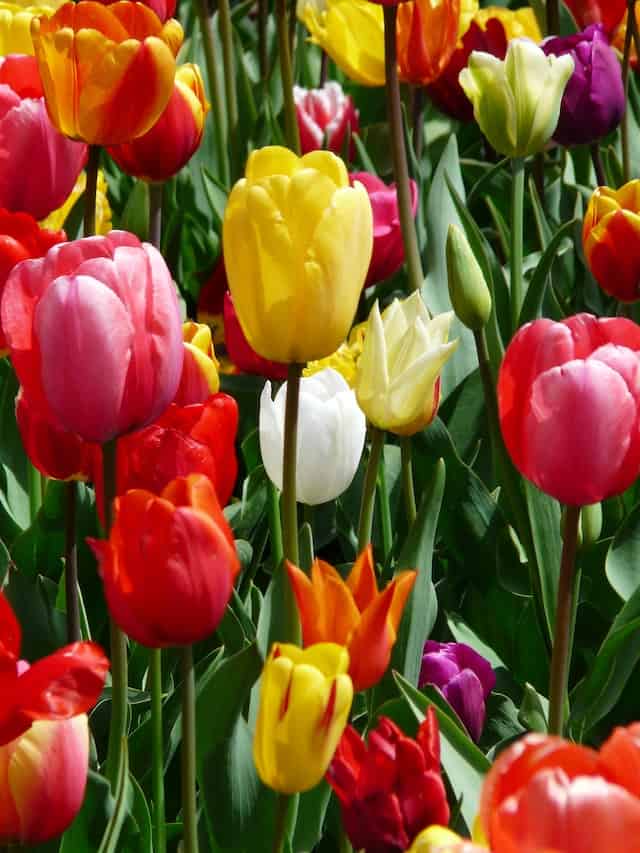
Tulips offer a burst of color that can create an eye-catching display when planted among hostas. As springtime heralds the arrival of tulips, their vibrant blooms juxtaposed against the hostas’ lush greenery can create a captivating scene. While tulips require full sun to perform at their best, they can still thrive in areas with partial shade, especially when given the right conditions.
Consider planting tulips in front of hostas, where their upward growth will draw the eye towards the lush backdrop. These bulbs will bloom before the hostas fully leaf out, providing an early spring splash of color that sets the stage for the more subdued tones of the hostas later in the season. When planted together, the interaction of early spring blooms and summer foliage offers a multi-layered aesthetic that will delight.
Brunnera
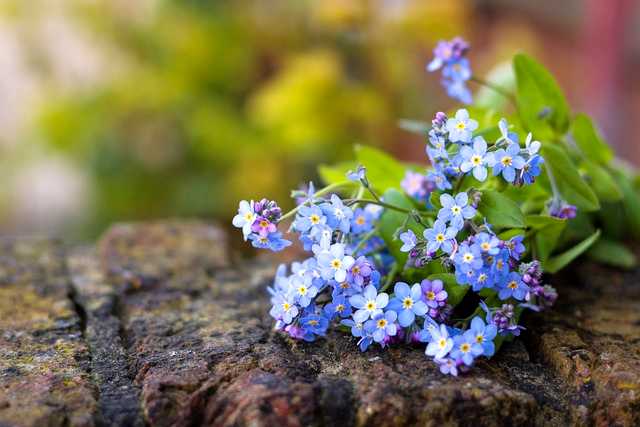
Brunnera macrophylla, or Siberian Bugloss, is another perfect companion for hostas. This perennial is celebrated for its heart-shaped leaves and tiny, forget-me-not-like blue flowers that emerge in spring. Brunnera thrives in the same shaded conditions as hostas, making it an excellent choice for planting alongside them.
The captivating blue of Brunnera blooms contrasts beautifully with the green and yellow variegations found in many hosta varieties. This plant spreads slowly, allowing it to establish itself without overwhelming its neighbors, creating a harmonious balance in shaded garden beds. Furthermore, the foliage of Brunnera remains attractive through the growing season, providing stunning texture beneath the larger leaves of hostas.
Allium

Allium, the ornamental onion, can bring a touch of whimsy to a garden planted with hostas. With their globe-like flower clusters held high on slender stems, Allium blooms split the visual weight of the large leaves of hostas. They thrive in full sun to partial shade and do well in well-drained soil, making them versatile partners for hostas.
Planting Allium will not only draw the eye upward but will also add architectural interest to your garden. The colorful globes typically bloom in mid to late spring, ahead of the hostas’ full summer foliage, ensuring that your garden constantly showcases a variety of textures and colors at different times of the year. Additionally, Allium plants are known for being deer-resistant, which can be advantageous if your garden is prone to such visitors.
Clematis
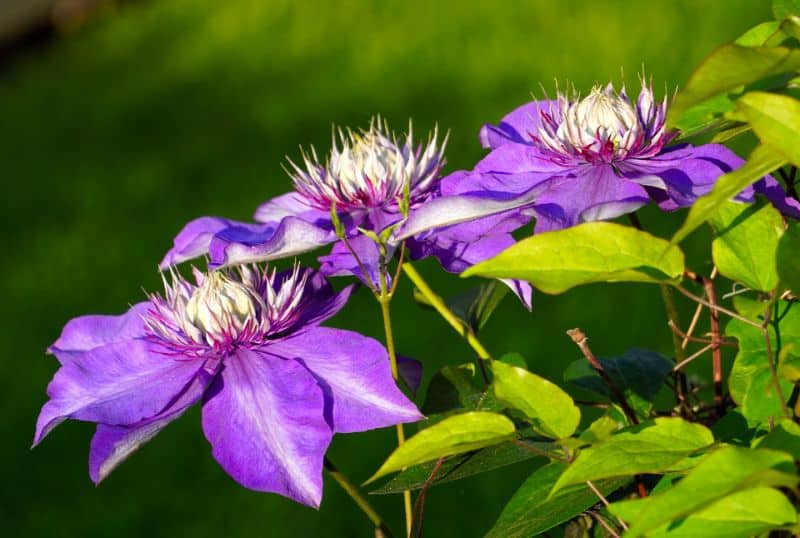
When seeking vertical growth alongside hostas, look no further than Clematis. This perennial vine is renowned for its stunning flowers, which bloom during varying seasons depending on the cultivar. By training Clematis to climb on a trellis or against a garden wall, you can create a stunning vertical element that contrasts beautifully with the horizontal spread of hostas.
Clematis typically prefers full sun but can tolerate some shade, making it adaptable for gardens dominated by hostas. Choose early or late-flowering varieties to maximize your bloom time in conjunction with hostas. As Clematis blooms develop, they will create an enchanting backdrop against the lush foliage, elevating the garden’s overall visual appeal.
Alyssum

Alyssum is a charming low-growing annual that can add a soft, delicate touch to a garden featuring hostas. With its tiny white or lavender flowers that produce a sweet fragrance, Alyssum can fill in any gaps around hostas, creating a beautiful carpet of color. This plant flourishes in full sun to partial shade and prefers well-drained soil, making it a strong candidate for placement with hostas.
The visual impact of Alyssum against the bold leaves of hostas offers a unique texture contrast. As it spills over pathways or edges, it softens the look of the garden, providing a delightful transition between the strong presence of the hostas and the surrounding garden elements.
Lady’s Mantle
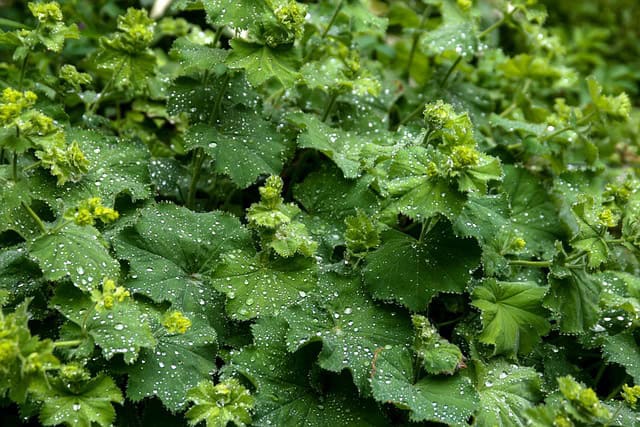
When it comes to foliage companions for hostas, Lady’s Mantle (Alchemilla mollis) is an exceptional choice. Its rounded, pleated leaves create a beautiful complement to the textures of hostas, and it’s known for the stunning chartreuse flowers that bloom in late spring to early summer. This perennial thrives in similar conditions to hostas, enjoying partial shade and well-drained soil.
Lady’s Mantle also has the unique ability to capture and hold water droplets on its leaves, creating a mesmerizing visual effect after a rain. Planting this flower alongside hostas creates an enchanting atmosphere, drawing the eye and encouraging viewers to explore the garden more closely.
Bleeding Heart
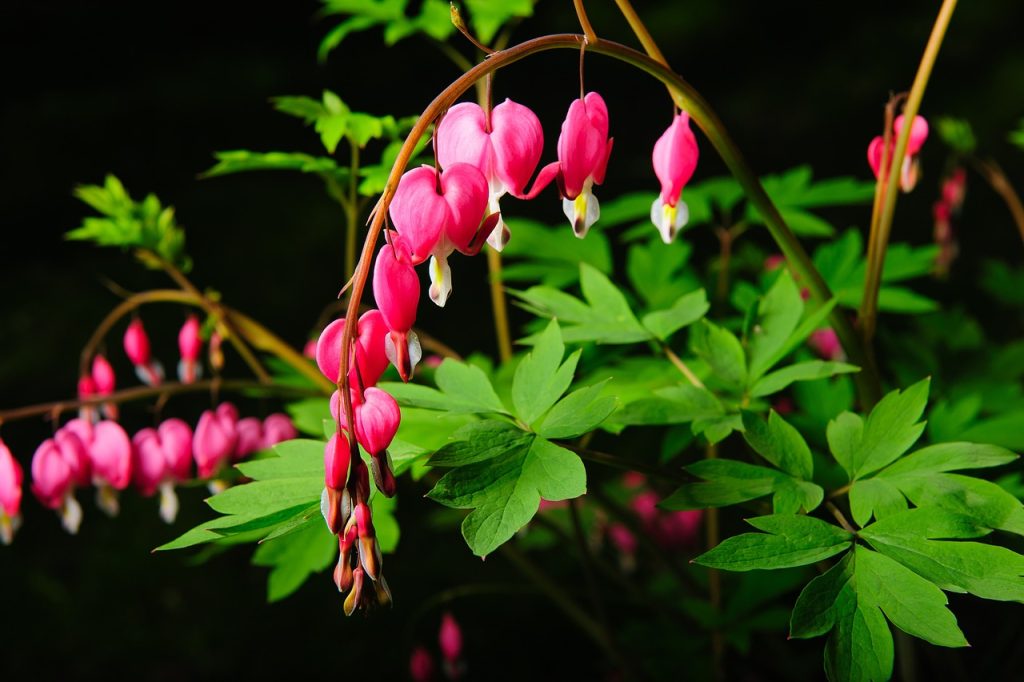
Bleeding Heart (Lamprocapnos spectabilis) brings a classic touch to any garden arrangement with its heart-shaped flowers hanging gracefully from arching stems. The lovely pink and white blooms create a romantic aesthetic that pairs harmoniously with the dramatic foliage of hostas. Bleeding Hearts thrive in partial to full shade, making them well-suited for use in shadowy garden spots alongside hostas.
This perennial typically blooms in spring, providing a burst of soft colors that precede the hostas’ full emergence. By positioning your Bleeding Heart plants near hostas, you can create a serene and tranquil environment that feels welcoming and tactile.
False Goat’s Beard
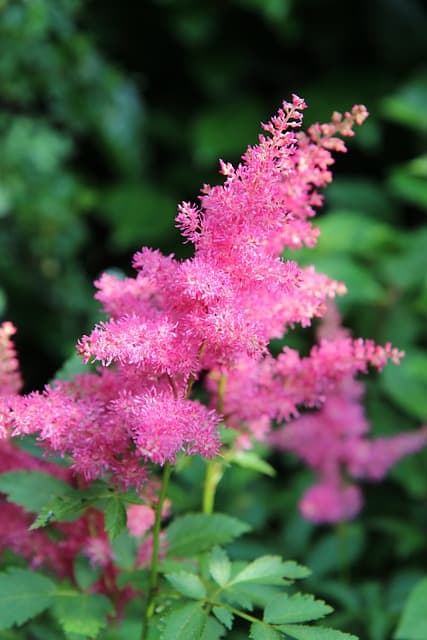
False Goat’s Beard (Aruncus dioicus) presents an excellent opportunity to add both height and texture to your garden alongside hostas. Known for its fluffy, plume-like flower clusters and fern-like foliage, this plant offers a beautiful contrast against the smooth leaves of hostas. False Goat’s Beard thrives in moist, well-drained soil under partial shade, effectively complementing the growth requirements of hostas.
This plant’s elegant blooms emerge in late spring and continue through mid-summer, ensuring that your garden maintains interest over time. With its statuesque presence and lush greenery, False Goat’s Beard enhances the visual layers in your planting design, allowing for rich, mixed textures.
Hepatica

Hepatica is a delightful perennial that makes an exciting understory plant in shaded areas. Known for its delicate, star-shaped flowers that bloom in early spring, Hepatica can be a charming addition to the garden where hostas are present. Typically, they thrive in moist, well-drained soil and can tolerate shade beautifully, aligning them with the growth preferences of hostas.
The subtle colors of the Hepatica flowers, ranging from white to purple or blue, provide a delicate contrast to the hostas’ bold foliage. Planting them together creates an enchanting layered garden where the soft blooms of Hepatica peek out from underneath the larger hosta leaves, inviting viewers to explore and discover.
Cranesbill Geranium

Cranesbill Geranium (Geranium maculatum) is a fantastic perennial that serves as a grounding element to a garden of hostas. Known for its soft purple or blue flowers and fern-like leaves, Cranesbill Geranium creates a lush, green carpet that pairs seamlessly with the bold presence of hostas. It thrives in partial shade and prefers well-drained, evenly moist soil, making it a perfect companion in shaded garden beds.
This resilient plant’s foliage provides a textured backdrop while its blooms contribute splashes of color from late spring to fall. By planting Cranesbill Geranium around hostas, you achieve a harmonious blend of colors and forms that will delight the senses throughout the growing season.
Bugbane
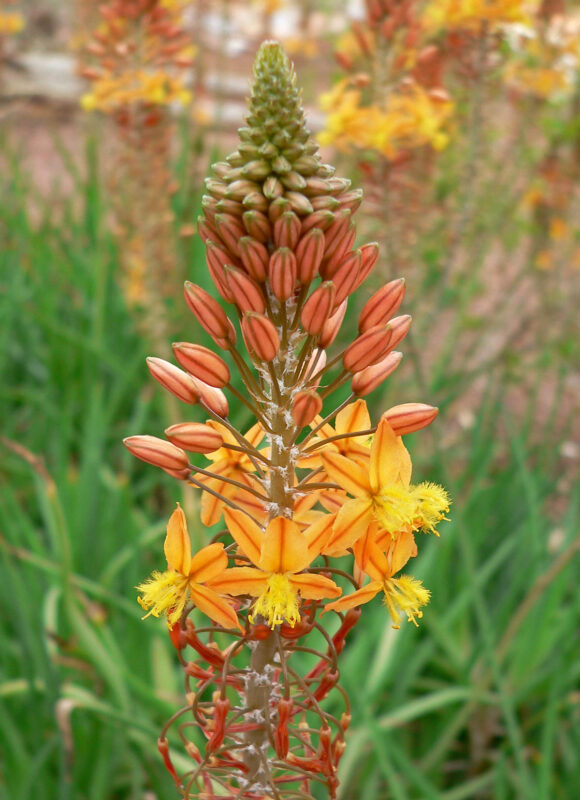
Bugbane (Cimicifuga racemosa) is a tall perennial known for its striking foliage and aromatic white flower spikes that rise dramatically from the base. This plant thrives in part to full shade, pairing effortlessly with hostas, and it features dark green leaves that create a rich tapestry against the vibrant hosta leaves.
The flowers bloom in late summer, providing a beautiful transition from the lush greens of spring through summery bursts of color. Their height adds vertical interest while serving as an excellent backdrop for shorter hostas. This combination allows your garden to maintain beauty and texture all season long, making Bugbane an ideal choice for planting among hostas.
Monkshood
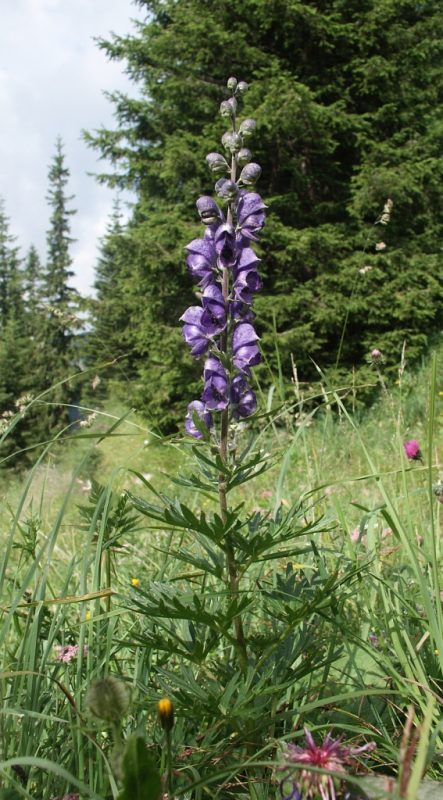
Monkshood (Aconitum) is a dramatic perennial that brings both height and bold color to the garden. Known for its stunning blue or purple flowers that resemble a hooded cap, this plant thrives in part to full shade, with moisture-retentive soil, thus creating a perfect partnership with hostas.
As a seasonal bloomer from mid to late summer, Monkshood provides visual interest that stands out against the lush foliage of hostas. Its tall flower spikes enhance the vertical dimension of your garden, drawing the eye upwards and providing a stunning contrast that enhances the overall garden design.
Pansies
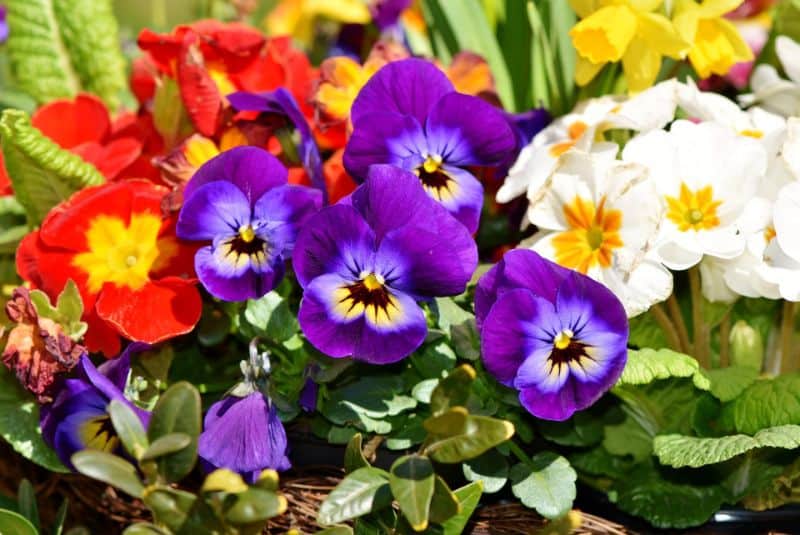
For a burst of cheerful color in the cooler months, pansies lend themselves beautifully as annual companions to hostas. Their vibrant colors and heart-shaped leaves create a playful contrast with the hostas’ more substantial presence. Pansies prefer cooler weather, so planting them in early spring or fall aligns well within the timeline of hostas’ growth cycle.
These annuals can fill in gaps around hostas or be used as a bright border to create a cohesive look. Their blooms will fade in the heat of summer, but when combined with hostas, they set a dynamic scene that invites a charming visual narrative, showcasing how versatility can transform a garden.
Bugleweed
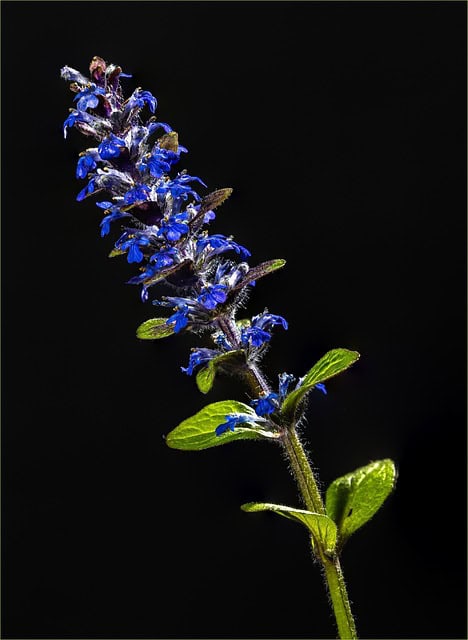
Bugleweed (Ajuga reptans) is a stunning ground cover that can harmonize beautifully with hostas. Known for its lush green leaves and spikes of blue-violet flowers that bloom in spring, Bugleweed works well in shade or partial shade and prefers moist, well-drained soil. It spreads quickly, making it ideal for filling in gaps and complementing the foliage of hostas.
This pair not only creates an intriguing tapestry of green and purple hues but also makes it easy to maintain a weed-free garden space. The lush ground cover protects the roots of the hostas while enhancing the visual appeal of your landscape.
Hostas
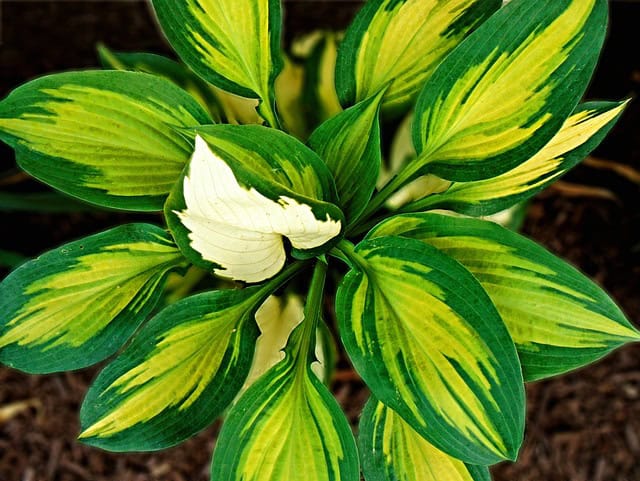
As we reach the final section, it’s important to circle back to the star of the show: hostas. With a staggering variety of shapes, sizes, and colors, hostas are the heart of any shaded garden. Their foliage possesses an unparalleled ability to provide structure and elegance, complementing a range of flowers and plants.
Hostas form a natural backdrop for numerous companion plants by creating layers within a garden space. Their resistance to deer, adaptability to various soil types, and preference for moisture make them invaluable in many gardens. As the hostas flourish, they provide lush, rich greenery that accentuates the beauty of companion plants, maintaining a garden alive with diversity.
Conclusion
Choosing the right flowers to plant alongside hostas can dramatically enhance both the look and feel of your garden. From the delicate blooms of Coral Bells to the dramatic heights of Monkshood, the possibilities for pairing flowers with hostas are nearly endless. Not only do these plants complement each other aesthetically, but they also create a rich, diverse ecosystem that attracts pollinators and enriches the life of your garden.





